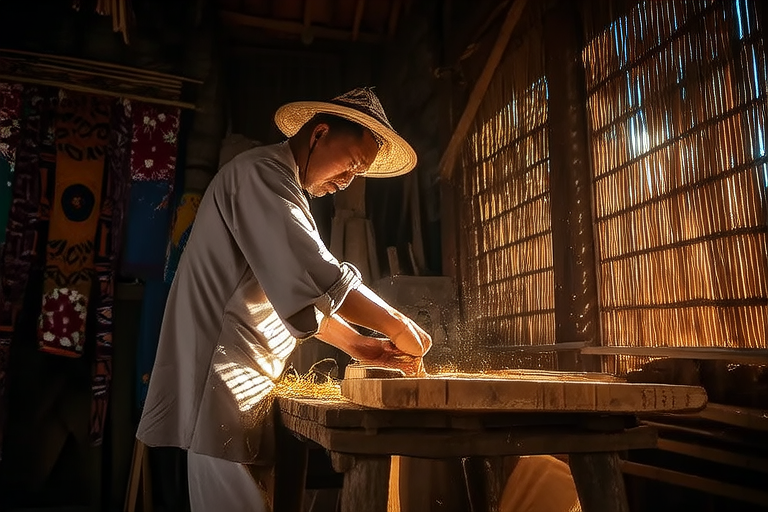Cultural Customs Unveiled: A Journey into Tradition

Cultural Customs Unveiled: A Journey into Tradition
Introduction
Cultural customs are the threads that weave together the fabric of human societies, reflecting the history, values, and daily lives of diverse communities. These traditions shape individual and collective identities, providing a sense of belonging and continuity. Understanding cultural customs is essential for travelers and global citizens, fostering mutual respect and enriching cross-cultural exchanges.
This article embarks on a journey to uncover the richness of cultural customs from various parts of the world. We will explore ancient traditions, vibrant festivals, daily social norms, and the intricate connections between culture and artistic expression. By delving into these aspects, we aim to deepen our appreciation for the world’s cultural diversity and the importance of preserving these traditions in an increasingly globalized society.
Section 1: Ancient Traditions and Rituals
Ancient customs often hold deep historical and spiritual significance, passed down through generations. In Japan, the Shinto tradition venerates nature and ancestors, manifesting in rituals like the Shinto purification ceremony, which involves washing hands and rinsing the mouth. This practice symbolizes purity and respect for the divine.
In Africa, the Zulu people celebrate the Umkhosi Womhlanga, a fertility rite where young men undergo initiation rites to transition into manhood. This ceremony is deeply rooted in tribal history, emphasizing community, lineage, and the continuity of cultural practices.
In Europe, the Beltane festival in Ireland marks the beginning of summer. Participants light bonfires and perform rituals to ward off evil spirits and ensure prosperity. The historical context of Beltane reflects ancient Celtic beliefs about the balance between darkness and light, symbolizing renewal and growth.
Section 2: Festivals and Celebrations
Festivals are communal celebrations that bring people together, often with religious, historical, or cultural significance. Diwali, the Festival of Lights, is one of the most significant Hindu festivals, celebrated in India and by Indian communities worldwide. It commemorates the victory of good over evil, symbolized by lighting oil lamps and decorating homes with colorful rangoli designs.
Carnival, particularly famous in Brazil, is a vibrant pre-Lenten celebration marked by parades, samba dancing, and elaborate costumes. Originating from Catholic traditions, Carnival fosters community spirit and creative expression. Local participation is enthusiastic, with many Brazilians preparing for months to showcase their talents.
Oktoberfest in Germany is another iconic festival, celebrating Bavarian culture and beer. Held annually in Munich, it features traditional music, food, and drink. Oktoberfest brings together visitors and locals, creating a festive atmosphere that honors German heritage.
Section 3: Daily Life and Social Norms
Daily customs vary widely across cultures, influencing greetings, dining, and social interactions. In Japan, bowing is a common form of greeting, expressing respect and politeness. In contrast, in some African countries, shaking hands is a customary way to greet others, often accompanied by inquiries about family and health.
Dining etiquette also differs significantly. In Thailand, it is customary to eat with a spoon and fork, while in Ethiopia, injera (a flatbread) is used to scoop up stews. When traveling, respecting local customs during meals shows appreciation for the host culture.
To engage respectfully with local customs, travelers should observe and follow established norms. For example, removing shoes before entering homes in many Asian countries is a sign of respect. By being mindful of these practices, travelers can foster positive interactions and build meaningful connections with locals.
Section 4: Art, Music, and Craftsmanship
Cultural customs are often intertwined with artistic expressions, contributing to the preservation of heritage. In Mexico, Day of the Dead (Día de los Muertos) is celebrated with vibrant altars adorned with marigolds, sugar skulls, and photos of deceased loved ones. This festival showcases the country’s rich visual arts, blending indigenous and Catholic influences.
In India, classical music genres like Hindustani and Carnatic are deeply connected to religious and philosophical traditions. These musical forms reflect the country’s spiritual heritage and continue to inspire new compositions. Similarly, traditional crafts such as woodcarving in Bali or pottery in Japan are passed down through generations, preserving cultural knowledge and skills.
The connection between cultural customs and artistry is vital for maintaining cultural identity. By supporting local artists and artisans, travelers can contribute to the preservation of these traditions and help ensure their continued relevance in modern times.
Conclusion
In this journey through cultural customs, we have explored the rich tapestry of traditions from various parts of the world. From ancient rituals to contemporary festivals, daily social norms to artistic expressions, each custom offers a window into the history, values, and daily lives of its people.
Understanding and respecting these customs is crucial for travelers and global citizens. By embracing cultural diversity, we can foster mutual respect and enrich our experiences. In a rapidly globalizing world, it is more important than ever to preserve cultural heritage and ensure that these traditions continue to thrive for future generations.
As we conclude, let us remember the profound impact of cultural preservation. By appreciating and celebrating the customs of others, we contribute to a richer, more interconnected world. Let us commit to honoring the traditions that define us and the communities we share this planet with.